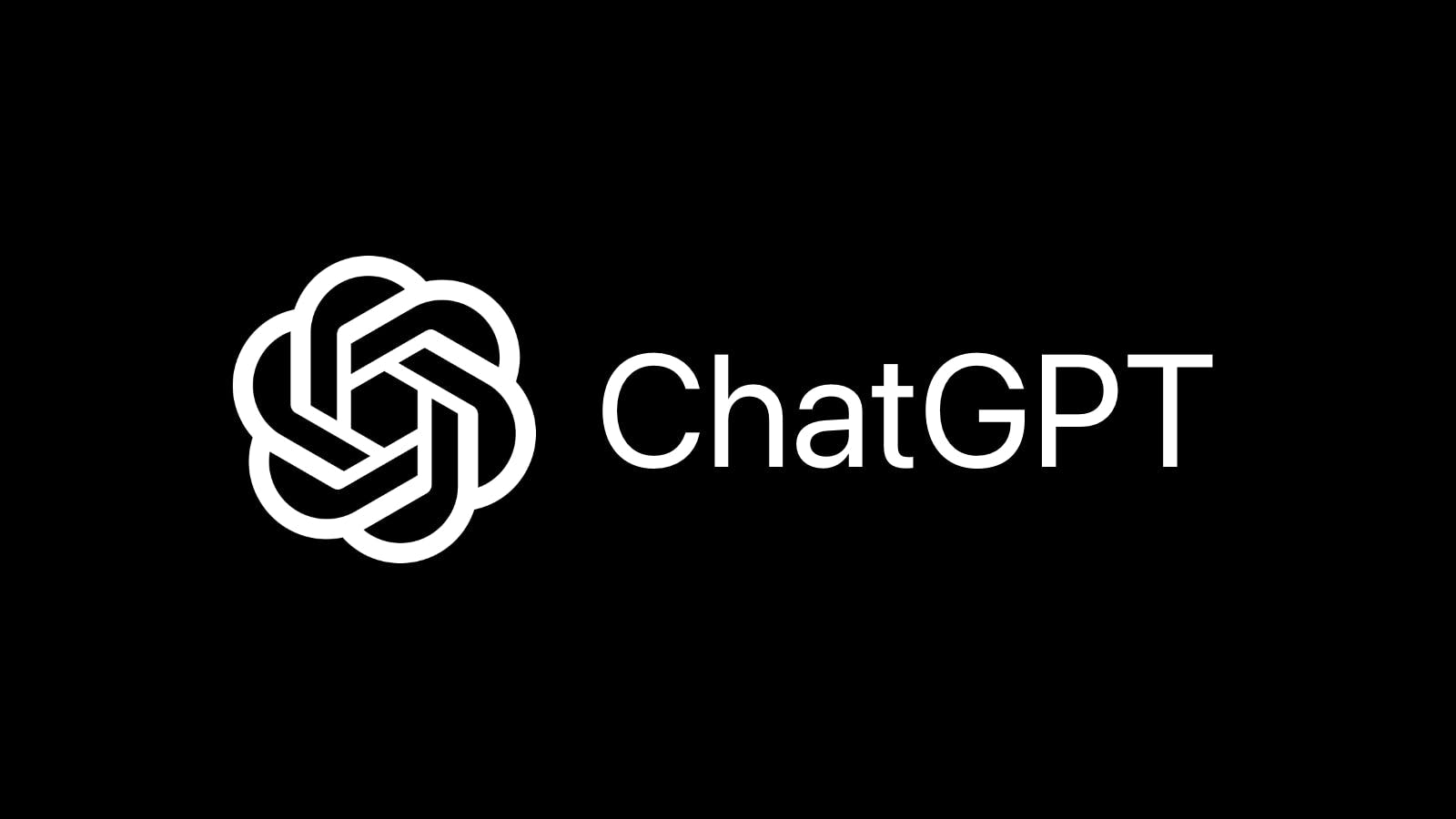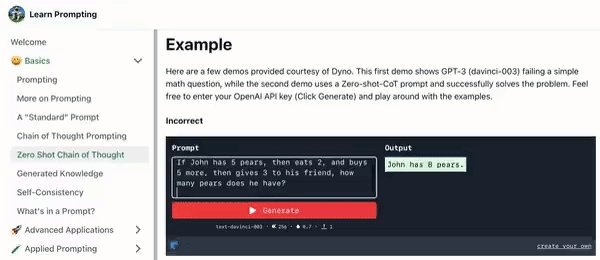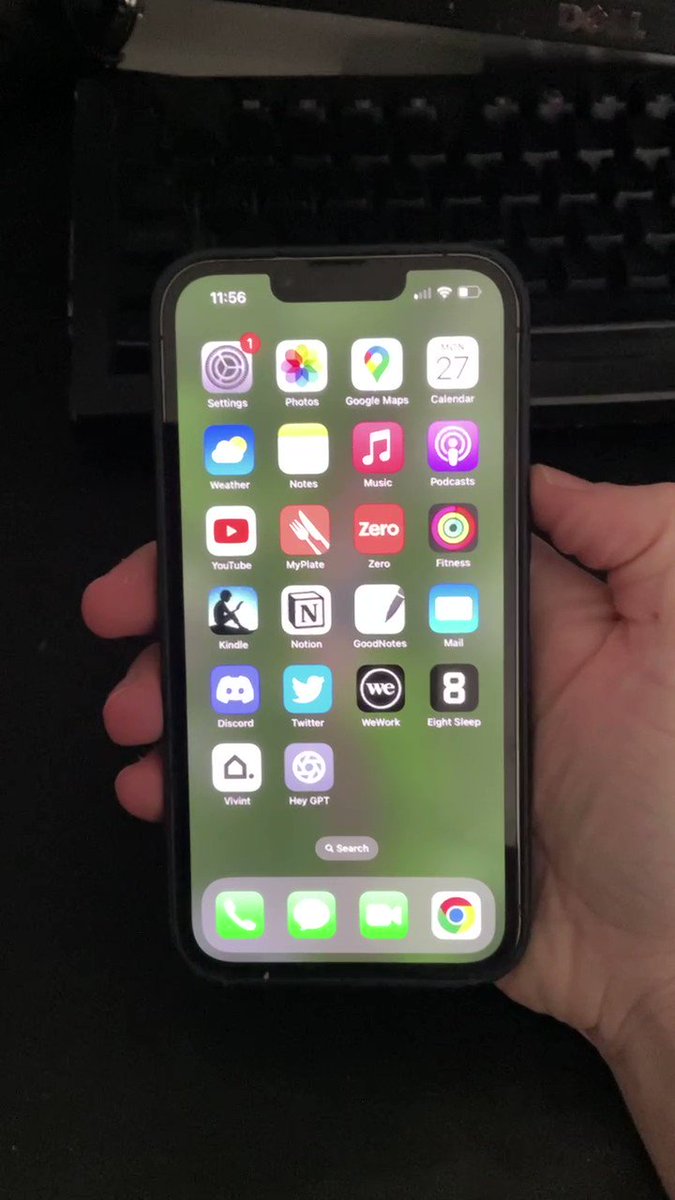
How to Use ChatGPT: A Step-by-Step Guide for Beginners to Enhance Your Conversations and Writing
From Answering Questions to Creative Writing, ChatGPT Can Do It All. Here's How to Harness Its Power for Your Needs!
Good Morning!
Delivering interesting content every single week on Web3, Security, Crypto, NFTs, Design & AI.
It's FREE, Takes less than 5-minutes to read, and you are guaranteed to learn something.
Subscribe to get valuable Web3 News, Useful Resources and Insights every week to your Inbox!
Are you looking for a game-changing AI tool to elevate your conversations and written content? Look no further than ChatGPT!
This powerful tool uses advanced natural language processing to help you with a wide range of tasks, from answering questions and generating text to creative writing and more.
Whether you're a student, a blogger, a marketer, or just someone who loves to communicate effectively, ChatGPT can help you unlock your full potential.
So why wait? Discover the power of ChatGPT today and take your conversations to the next level!
If you're thinking about clicking away before finishing this article, I urge you to keep going. The end is where the real value lies.
Don't miss out on the best part of this newsletter - make sure you read until the very end. You won't regret it.
I encourage you to read until the end. Trust me, it'll be worth it!
ChatGPT was created by OpenAI, the same company that also made DALL-E 2, which kicked off the wave of AI image generators. While DALL-E 2 generates images, ChatGPT is solely text-based—and it’s not OpenAI’s first chatbot.
OpenAI’s original GPT (Generative Pre-trained Transformer) chatbot was trained on a massive collection of text data from the internet, allowing it to generate human-like text in response to a prompt. It was followed with GPT-2 in 2019, GPT-3 in 2020, ChatGPT on November 30, 2022 and GPT-4 in March, 2023.
ChatGPT works by using algorithms to analyse and generate text based on the prompt from the user. When a user inputs a prompt or question, ChatGPT uses its training data to generate a response that is similar to what a human might say in that context.
ChatGPT is free to use for anyone with an account on OpenAI’s website. You can create a free account with your email address, Google account, or Microsoft account. At the time of writing in February 2023, there are no usage limits on the free version of ChatGPT.
There is also a “ChatGPT Plus” subscription plan for $20 per month. It offers reliable availability when demand is high, faster response speeds, and priority access to new features like ChatGPT plugins.
ChatGPT Plus now gets you access to GPT-4, an upgraded model that’s more capable than the GPT-3.5 (technically, GPT-3.5-turbo) model in the free version of ChatGPT. You can also use Bing’s AI chat, which is built on GPT-4 as well.
Sign up for an OpenAI account
Complete OpenAI account sign-up
Verify your phone number
Accept ChatGPT terms and conditions
Start using ChatGPT
To use ChatGPT all you need is any modern device with a web browser, so launch Safari, Chrome, Firefox, Edge, Brave, or your browser of choice, and get started.
Go to https://chat.openai.com/ in a web browser and signup (or login with Google or a Microsoft account)

At the prompt, ask a question on virtually any subject (as long as it was pre-2021, since that was the data it was given to work with for now), for example:

“Explain string theory in simple terms”
“Why is AI dangerous?”
“Write me an AppleScript that turns off my Mac at 6pm on Thursdays”
“Write me a python script that finds the 10 most commonly used words on a webpage”
“Write me a formal letter using complex legalese that tells my neighbor to stop eating my flowers”
“Write a letter to my boss to quit my job, but make it sound like a 2nd grader wrote it”
“Tell me about your ethics”
“Give me a fictional conversation between Einstein and Oppenheimer where they discuss nuclear fusion”
“Give me a recipe that uses spaghetti, sausage, broccoli, and tomato sauce”
“Plan me a 10 day vacation somewhere safe and tropical, but exotic and unique”
“Write me a song about loving cookies written in iambic pentameter”

You can then explore and refine answers by saying things like “explain that further” or “rewrite, but make it sound like a third grader wrote it”
Have fun and be impressed (and/or creeped out)
ChatGPT is genuinely impressive as you will quickly find out, and it’s astonishing how many careers, jobs, positions, and duties will be enhanced, impacted, or obsoleted in one way or another by these type of AI tools.
Here, ChatGPT writes a bash script to find large files, then explains how the bash script works:


Here, ChatGPT offers a recipe given a set of ingredients

ChatGPT explains it’s own ethics:

Key Takeaway
Here's how to use ChatGPT:
Visit chat.openai.com in your web browser.
Sign up for a free OpenAI account.
Click "New Chat" at the top-left corner of the page.
Type a question or prompt and press enter to start using ChatGPT.
ChatGPT is extremely popular, and it’s still just a research project. You may not always be able to use ChatGPT if a lot of other people are also using the service at the moment. You will see a message saying “ChatGPT is at capacity right now” if you can’t use it. To fix this error, you may want to come back later—or you could perhaps just refresh the page in your web browser and it may work.
If this is an issue for you, paying $20 per month for ChatGPT Plus will get you priority access so you can use ChatGPT even when it’s under a heavy load.
You may also see errors in your conversations while using ChatGPT, like a “network error” message. This can sometimes be caused by a problem with your network (for example, an internet connection problem, Wi-Fi issue, or a VPN problem), but it may also be a problem with ChatGPT’s servers. In some cases, requesting a very long response from ChatGPT may result in an error. You may be prompted to request another response from ChatGPT or try reloading the page.
If other web pages are working properly but you’re experiencing errors with ChatGPT, it may be an issue with lots of people trying to use it—step away from ChatGPT and try it again later, or consider paying for ChatGPT plus for priority access.
“GPT” stands for “Generative Pre-trained Transformer.” A GPT is a language model that uses deep learning to generate human-like text in response to a prompt. The “Chat” part of the name comes from being a chatbot.
ChatGPT Plus is a subscription plan for $20 per month. It includes reliable availability when demand is high, faster response speeds, and priority access to new features like plugins. It also now gives you access to GPT-4, which is a more capable model that will often give better results. Power users may benefit from the Plus features.
OpenAI says it does not save data from individual interactions with ChatGPT for its own use. When you have conversations with ChatGPT, your input is processed to generate a response, and your conversation is saved in your account. But once you delete your account, the conversation is gone forever.
OpenAI does not have an official ChatGPT app for iPhone and Android. It does, however, work well in a mobile browser on a smartphone. Due to its popularity, there are many fake ChatGPT apps in the Apple App Store and Google Play Store. That said, some apps like Petey for Apple Watch will legitimately let you access the chatbot through ChatGPT’s API.
ChatGPT can only be as accurate and honest as the material it analyzes. The accuracy of its responses is similar to how accurate you would be after reading an article online. ChatGPT can only tell you what it has read. It cannot tell you if it is accurate in the same way an expert with decades of experience could. It’s the difference between “I read a bunch of articles about plumbing” and “I’m a master plumber, and I can answer that question with authority.”
ChatGPT is not up to date on current events. At the time of writing, the dataset of the current version of ChatGPT only goes up to 2021. ChatGPT is not currently connected to the internet and does not “absorb” new information in real time. ChatGPT will be able to access information on the web with plugins.
There’s nothing stopping you from plugging questions from your homework into ChatGPT. However, you probably don’t want to do that. ChatGPT is often wrong because it was trained on text from the internet. It’s very good at sounding authoritative about something, but it could be completely wrong. You would need to do a lot of fact-checking to ensure accuracy. Not to mention it is most certainly a direct violation of your school or university’s academic integrity policies.
Keep in mind that ChatGPT is using information from the internet, and the internet is not always accurate. Don’t take everything ChatGPT says as fact. It’s very often not.
Using ChatGPT is actually super simple. All you need to do is type in your question or message, and ChatGPT will do the rest. It's like having a super-smart, super-helpful friend at your fingertips 24/7.
Whether you want to know the answer to a tricky trivia question, get some advice on your latest project, or just have a friendly chat, ChatGPT is ready and waiting to help.
And the best part? ChatGPT is always learning and growing. As more and more people use the system, ChatGPT gets smarter and more capable. So not only is it easy to use, but it's also constantly improving.
So don't be afraid to give ChatGPT a try. It's the perfect tool for anyone who wants to learn, grow, and connect with others in a fun and friendly way. Let's chat!
https://twitter.com/search?q=chatgpt%20(from%3Akazani351)&src=typed_query
Introduction
In this course, we will explore the fascinating world of ChatGPT prompts and show you how to
leverage their power to generate creative and engaging content. Whether you're looking to write
compelling blog posts, develop engaging social media copy, or craft convincing email pitches,
ChatGPT prompts can help you achieve your goals with ease. Throughout the course, we'll cover
everything from the basics of prompt generation to advanced techniques for optimizing output
quality. By the end of the course, you'll be equipped with the knowledge and skills you need to
make the most of this powerful AI language model and take your content creation to the next
level.
Contents:
1. Concept
2. Best ChatGPT Prompts According to ChatGPT
3. Best ChatGPT Prompts According to Humans
4. Examples
5. Wrap-up
1. Concept
To get started with ChatGPT prompts, it's important to understand the basic principles behind
this powerful AI language model. At its core, ChatGPT is designed to generate text in response to
a given prompt, utilizing a powerful neural network that's been trained on vast amounts of data.
By understanding how ChatGPT works and learning how to create effective prompts, you can tap
into this vast reservoir of knowledge and generate high-quality content on virtually any topic.
The first step in working with ChatGPT prompts is to select an appropriate prompt type.
Common prompt types include sentence completion prompts, summarization prompts, and
question-answering prompts, each of which is suited for different kinds of content generation.
Once you've selected your prompt type, you can begin crafting your prompt by providing the
initial text or question that will serve as the basis for the generated output.
To get the most out of ChatGPT prompts, it's also important to understand the various
parameters that can be used to adjust the output quality and quantity. These parameters include
things like temperature, which controls the level of randomness in the generated output, and
top-k sampling, which restricts the output to the top k most likely responses.
Another key concept for working with ChatGPT prompts is fine-tuning. Fine-tuning involves
training the model on a specific set of data, such as your own writing or a set of industry-specific
texts, to produce more tailored output. Fine-tuning can be especially useful for content creators
who work in specialized fields or have unique writing styles, as it allows them to generate highly
personalized content with ease.
Throughout this course, we'll explore each of these concepts in depth, providing you with
practical tips and strategies for generating high-quality content using ChatGPT prompts. We'll
cover everything from selecting the right prompt type to fine-tuning the model to suit your
needs, helping you to unlock the full potential of this powerful AI language model. By the end of
the course, you'll be able to generate highly engaging and effective content with ease, using
ChatGPT prompts as your go-to tool for content creation.
2. Best Prompt Tips According to ChatGPT
1. Determine the purpose of your prompt: Before you start writing a prompt, you
need to determine the purpose of it. Ask yourself, what do you want ChatGPT to
do? Do you want it to generate a creative story, answer a question, or have a
conversation?
2. Choose your topic: Once you have identified the purpose, choose a relevant topic
for your prompt. A topic could be anything from a current event to a personal
experience.
3. Consider your audience: Think about who your audience is and what they are
interested in. This will help you tailor your prompt to them.
4. Keep it simple: Your prompt should be clear and concise. Avoid using complicated
language or jargon that your audience might not understand.
5. Use open-ended questions: Using open-ended questions in your prompts will
encourage ChatGPT to provide a more detailed response. Avoid closed-ended
questions that only require a yes or no answer.
6. Provide context: If you're asking ChatGPT to generate a story or provide an opinion
on a topic, provide some context so it can better understand what you're asking.
7. Use keywords: Use specific keywords in your prompts to help ChatGPT better
understand what you're asking. For example, if you're asking ChatGPT to generate a
story about cats, make sure to include the word "cat" in your prompt.
8. Edit your prompts: Review your prompts before you submit them to make sure
they are clear, concise, and have all the necessary details.
9. Experiment and revise: It may take some trial and error to find the right prompts
that elicit the desired response from ChatGPT. Don't be afraid to experiment and
revise your prompts to get the best results.
3. Best Prompt Tips According to Humans
1. Be specific in your prompt to get a relevant and useful response.
2. Use natural language to make it easier for the chatbot to understand the context
and respond appropriately.
3. Provide context for your question to get a relevant answer.
4. Avoid open-ended questions that have no clear answer.
5. Keep the prompts simple and easy to understand.
4. Examples
• Example of a sentence completion prompt: "The best way to stay healthy is to..."
• Output: "...maintain a balanced diet, get regular exercise, and avoid unhealthy
habits like smoking and excessive alcohol consumption."
• Example of a summarization prompt: "Summarize the key points of this article
about renewable energy."
• Output: "This article discusses the benefits of renewable energy sources like solar
and wind power, including their potential to reduce greenhouse gas emissions and
combat climate change. The author also highlights some of the challenges facing
the adoption of these technologies, such as cost and scalability."
• Example of a question-answering prompt: "What is the capital of France?"
• Output: "The capital of France is Paris."
5. Wrap-up
• Understand the basic principles behind ChatGPT prompts, an AI language model
designed to generate text in response to a given prompt.
• Learn how to select appropriate prompt types, including sentence completion,
summarization, and question-answering prompts.
• Explore the various parameters that can be used to adjust output quality and
quantity, including temperature and top-k sampling.
• Discover the concept of fine-tuning, which involves training the model on a specific
set of data to produce tailored output.
• Gain practical tips and strategies for generating high-quality content using ChatGPT
prompts, from selecting the right prompt type to fine-tuning the model to suit your
needs.
1.
Don't miss out on this beginner's cheat sheet!
Unlock the full potential of this powerful AI language model with our easy-to-use guide.

How to become a Prompt Engineer? (ChatGPT)
Midjourney v4/v5 Guide (For Beginners)
The Must-Join Newsletters in the Web3, NFT, Security, DeFi, AI and Crypto Space
5 AI Art Generators You Can't Miss
If you're enjoying today's newsletter, why not share it with your friends? They might find it just as informative and entertaining as you do.
Sharing is caring, and by spreading the word about this newsletter, you're helping to support ME and ensure that more great content gets produced in the future. Plus, you'll get to have even more conversations with your friends about the interesting topics covered in each edition.
So go ahead and hit that share button.
I hope this was helpful!
Thank you for reading!
Let’s bust some more in next article.
If you want more, be sure to




 )
)
 48.6K
48.6K

 advanced)
advanced)





 Attention all AI enthusiasts!
Attention all AI enthusiasts! 








 How to turn ChatGPT into literally anyone
How to turn ChatGPT into literally anyone  Have you ever wanted to talk to Einstein, Nefertiti, Marcus Aurelius, Steve Jobs, Oprah Winfrey, Elon Musk, or even Buddha?
Have you ever wanted to talk to Einstein, Nefertiti, Marcus Aurelius, Steve Jobs, Oprah Winfrey, Elon Musk, or even Buddha? Now you can, by using ChatGPT
Now you can, by using ChatGPT Prompt + Examples in Thread
Prompt + Examples in Thread










